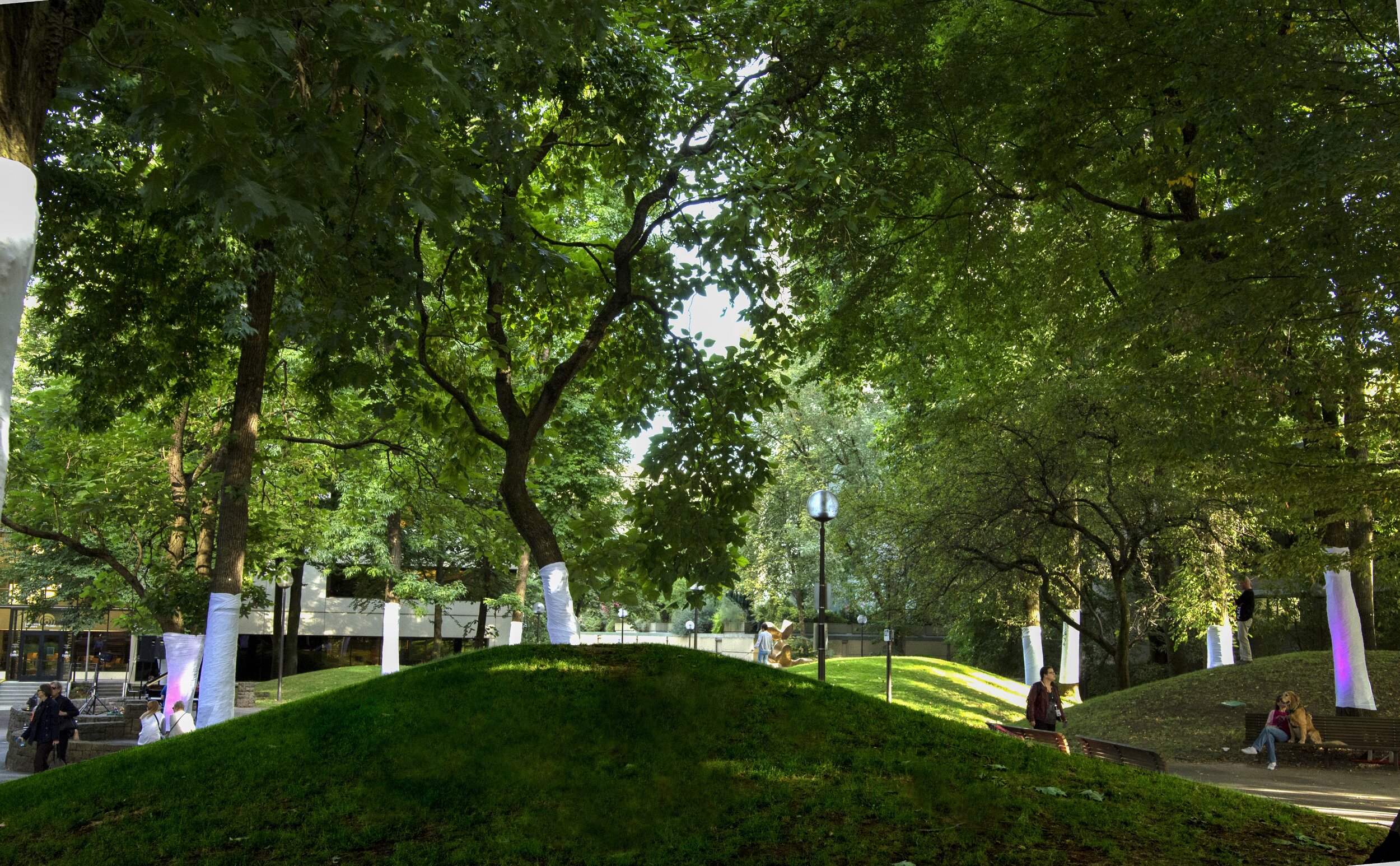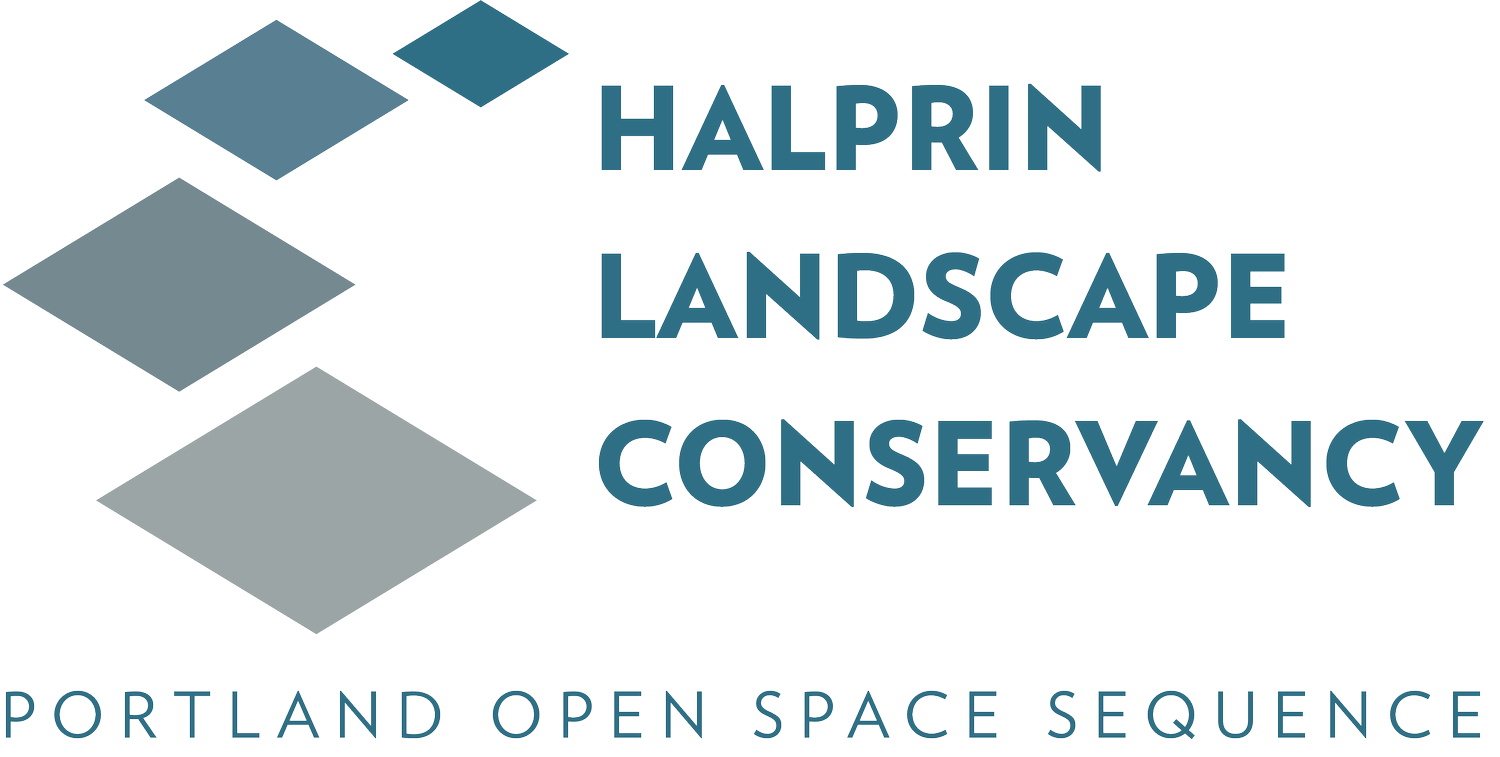
PETTYGROVE PARK
Unnamed, until the opening, Pettygrove Park was a part of the South Auditorium, the Prosper Portland’s (Portland Development Commission) first urban renewal project. The park was named for Francis W. Pettygrove, from Portland, Maine, the owner of Portland's first house, wharf, warehouse, and store. The same coin that Portland early settlers, Asa Lovejoy and Francis W. Pettygrove, used to determine whether our city would be named Boston or Portland, was flipped to determine which park in the open-space sequence would be Lovejoy and which would be Pettygrove. Pettygrove Park, 300 yards away from the crashing cascades of water in the Lovejoy Fountain, is composed of serene mounds of grass, trees, and stonework laid out among paths.
Pettygrove Park is bounded on all sides by pedestrian malls, which connect to other parks, including Keller Fountain Park and Lovejoy Fountain. The park is characterized by a dense tree canopy which shades a core of internal pathways pivoting along grassy berms and basalt stone walls. At the southeast corner of the park, a reflecting pool and sculpture serve as a focal point for pedestrians. In 1979, Prosper Portland (Portland Development Commission) installed Manuel Izquierdo's muntz bronze sculpture of a reclining woman, The Dreamer. Izquierdo, professor emeritus of Pacific Northwest College of Art, said that his sculpture "speaks of hope, of beauty and serenity, of love, and for a better life in our midst." He filled the sculpture with foam so that falling rain would make a gentle sound like a kettledrum rather than the ringing it would make if hollow.
In 2001, the Lawrence Halprin Landscapes Conservancy was formed to preserve and safeguard Halprin’s Portland legacy. The Pettygrove Park/Portland Open Space Sequence was listed in the National Register of Historic Places in March 2013.



